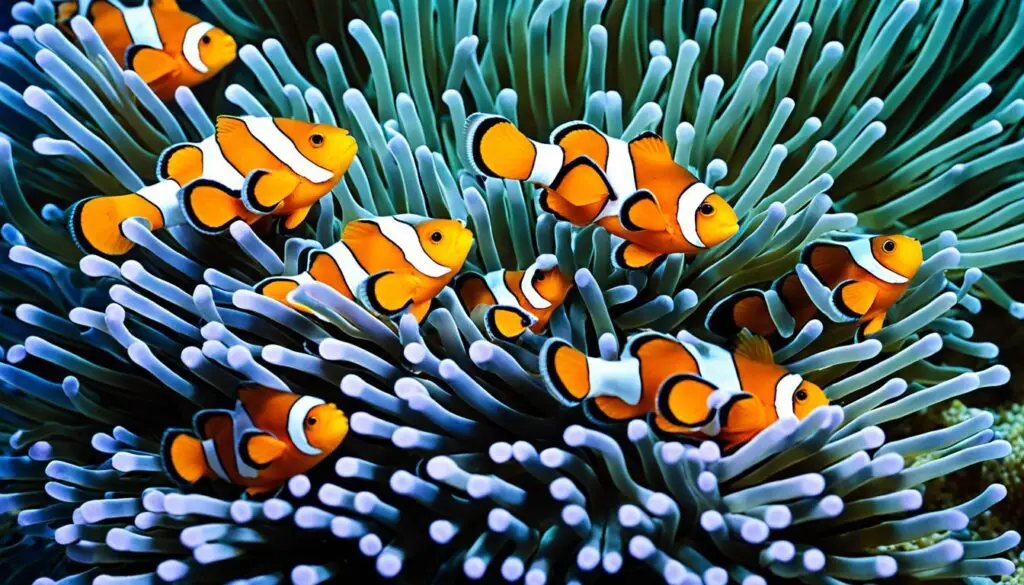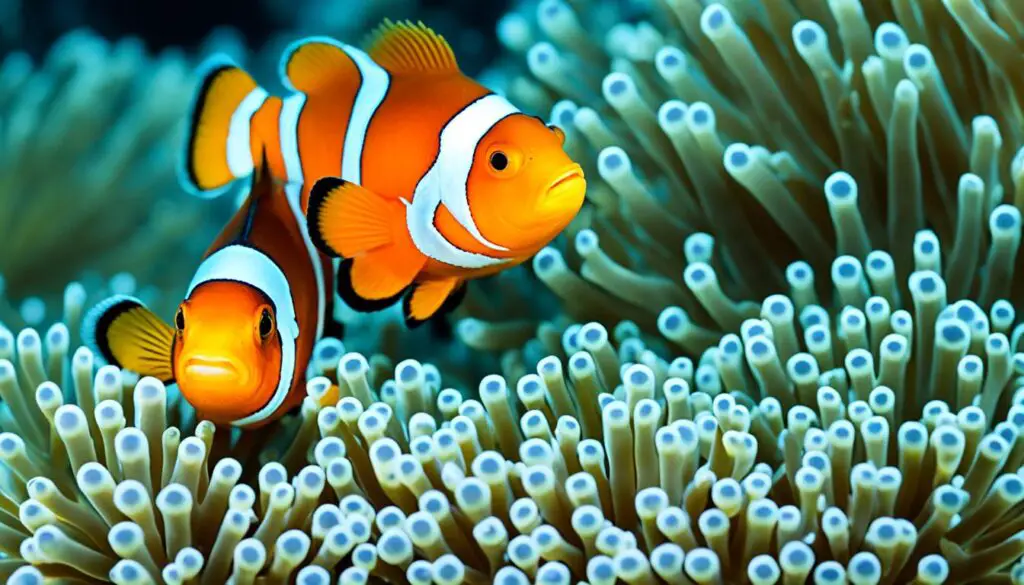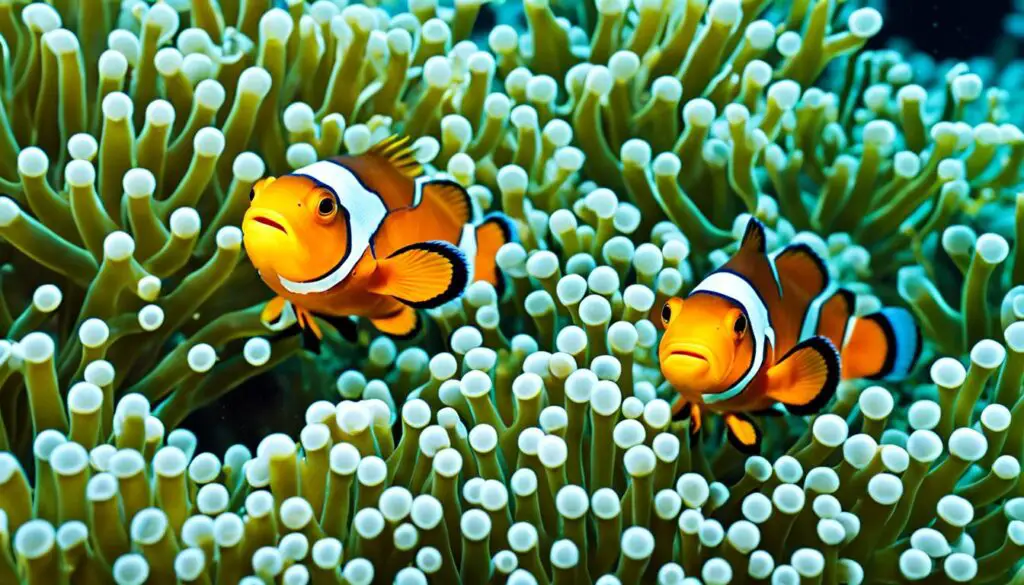The Ultimate Guide to Clownfish Tank Cycling: Start Strong!
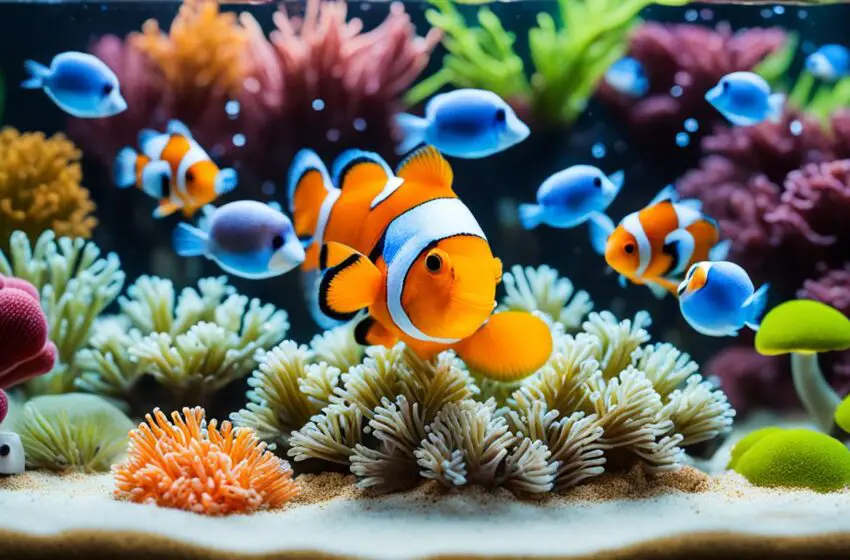
Hello to all who love aquariums! If you own or plan to set up a clownfish tank, you’re in the right spot. I’ll guide you through the fun and important process of clownfish tank cycling. This guide will give you tips to kick things off right.
First off, let’s dive into what aquarium cycling is. This process is key for keeping your clownfish healthy. It helps grow good bacteria that get rid of toxic chemicals like ammonia and nitrogen. These chemicals can harm your fish. By turning them into less harmful nitrates, and by breaking down waste, cycling makes a safe space for your clownfish to live.
Key Takeaways:
- Aquarium cycling is vital for maintaining a healthy clownfish tank.
- Bacteria play a crucial role in controlling toxic chemicals like ammonia and nitrogen.
- A well-balanced ecosystem ensures the well-being of your clownfish.
- Monitor ammonia levels and add fish or ammonia solution to seed your tank.
- The cycling process can take several weeks before introducing more fish and tank inhabitants.
Understanding the Basics of a Reef Tank
A reef tank is like a piece of the ocean at home. It’s a special type of aquarium that tries to copy the lively world of coral reefs. Instead of focusing just on fish, it cares for corals, invertebrates, and fish together. The goal is to make a mini, balanced ecosystem that is similar to a real reef.
This type of tank needs a keen eye on its water, light, and nutrition. Everything must be just right for the creatures living in it. This helps mimic the complex life of a real coral reef.
Keeping the water in good shape is vital for a reef tank. The right levels of chemicals like pH, alkalinity, calcium, and magnesium are key. Tests should be done often to ensure all is well.
Lighting matters a lot for a reef tank’s success. Real coral reefs live in brightly lit areas. Using LED lights can mimic the sun’s effects and support corals and algae.
Good water flow is also important. It helps keep the tank clean and well-aerated. By placing water-moving tools in smart spots, you can keep the tank’s water in good motion.
Good food is a must for the creatures in a reef tank. Corals and other filter feeders eat tiny plants and animals. Adding quality liquid or frozen foods will make sure every creature thrives.
Getting a reef tank right can be a lot of fun. With the right care, you can have a beautiful underwater world at home. It will remind you of the stunning life and colors of real coral reefs.
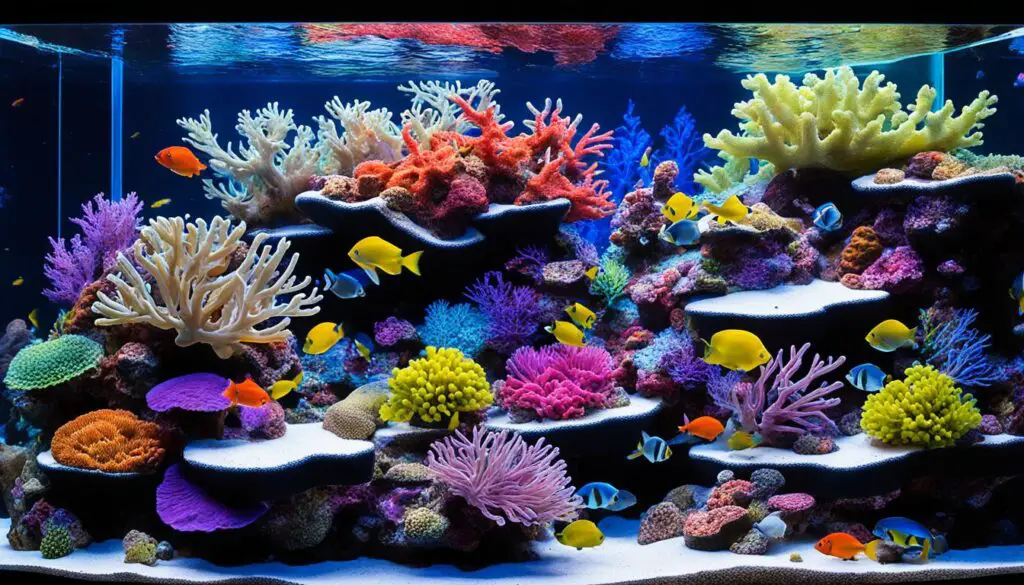
Planning Your Reef Tank
Starting a successful reef tank requires good planning. You need to choose the right tank size, location, and equipment. Each decision is critical for your tank’s success.
Tank Size
Choosing the right tank size affects what marine life you can have. It also impacts the stability of your tank’s ecosystem. Think about your space, budget, and skill level when picking a size.
For new tank owners, a 20-gallon tank is a good start. It’s easier to manage. Later, as you learn more, you can move to bigger tanks. These provide more space and options for your marine friends.
Location
Where you put your tank matters for your fish and corals’ health. Keep it out of direct sun to prevent too much heat and algae. Choose a place that can hold the tank’s weight safely. And avoid spots where it might get hit or disturbed often. Quiet places make happy fish.
Equipment Essentials
The right equipment is crucial for your reef tank’s success. You need good lighting, a filtration system, and proper water circulation. The right gear helps keep the water clean and your fish happy.
- Lighting: Pick lights that meet your corals’ needs. LEDs are great because they’re efficient and you can adjust them.
- Filtration: Filters clean the water, keeping it safe for your marine life. Use mechanical, chemical, and biological filters for the best results.
- Circulation: Good water movement is vital for your tank’s health. Powerheads and wavemakers help make water flow like the ocean.
Buy equipment from reliable brands to make your tank last. Regularly check and clean your gear to keep everything running smoothly.
By carefully planning your reef tank’s size, location, and equipment, you set the stage for a beautiful marine world. Next, we’ll cover choosing the best fish and corals for your tank.
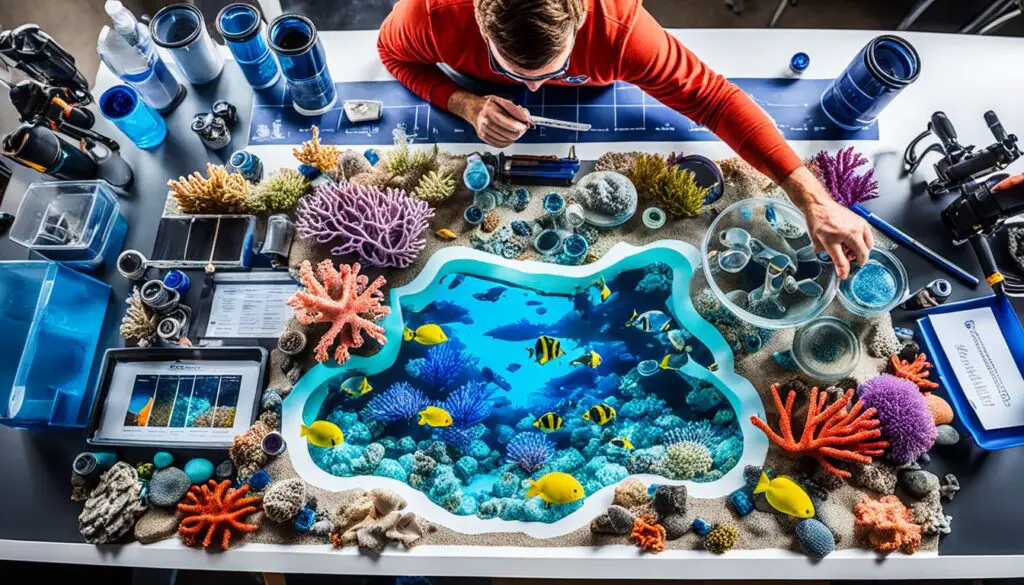
Choosing Your Inhabitants
Choosing the right inhabitants is key to a healthy reef tank. You should start with corals that are easy to care for. Zoanthids and mushrooms do well in different water types.
As you learn more, you can add LPS and SPS corals. These need very careful conditions and strong light. Be sure your tank is set up correctly for them.
Hardy fish are a good first choice. They can handle changes in water quality. Some good options are common clownfish, royal gramma, and firefish. Snails and hermit crabs are also great for keeping your tank clean and in balance.
Think about who can live together safely. Some fish might harm corals while eating or being aggressive. Do your homework to create a peaceful and flourish reef tank for everyone involved.
FAQ
What is aquarium cycling and why is it important for a clownfish tank?
Aquarium cycling grows good bacteria in the tank. These bacteria help keep the water safe by breaking down harmful waste products. This creates a good home for fish, especially clownfish, and their friends.
How long does the aquarium cycling process take?
The process usually lasts a few weeks. During this time, it’s very important to check the ammonia levels. This ensures the tank is ready for new fish and creatures.
What is a reef tank and what makes it different from a standard fish tank?
A reef tank is like a tiny piece of ocean at home. It sets out to mimic the life and color of real coral reefs. Unlike a regular fish tank, it needs special care for its water, light, and the way water moves. This care helps a reef aquarium stay healthy without lots of intervention.
What factors should I consider when planning a reef tank?
First, think about how big you want your tank. The size will affect what you can put in it and how stable it will be. Choose a good spot for the tank, one that’s not in direct light and can support its weight. You’ll also need the right lights, filters, and water movers to keep everything in balance.
How do I select the right inhabitants for my reef tank?
To make a thriving home, start with tough corals. Look for ones like zoanthids and mushrooms that do well in a tank. Add more as you get better, maybe some SPS corals. For fish, pick sturdy ones that don’t mind changes in water. Little cleaners like snails also keep the tank tidy. Always check if the animals you pick get along and have the same living needs.

